Do you find yourself stymied on a project, either at home or at work? Have you "tried
everything"? Maybe it's time to give up!
That's right.
"But what kind of negative, defeatist philosophy is that?!?", you might be saying.
But before you give up on me, please read on!
I was working on a little project around the house, and could not find a way to make it
work. The project was simple enough: Find or make a furniture pad to fit on the metal legs of a stool (it's
shown in the image on the right), since the supplied pads were small and hard. Yet each attempt only led
to failure and frustration. |
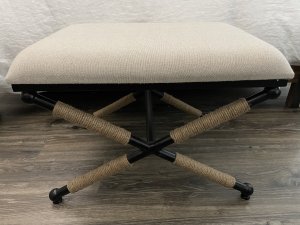 |
So here is the pitiful pad that was supplied with the stool. |
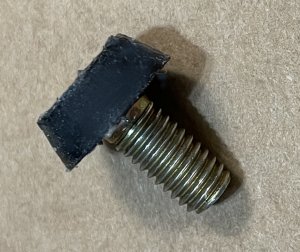 |
Failure #1 The first pass was to go buy a larger pad with its own bolt. The bolt was the same diameter as the original one, but, alas, the original one is metric (the bane of buying products made in other countries). It wouldn't fit! |
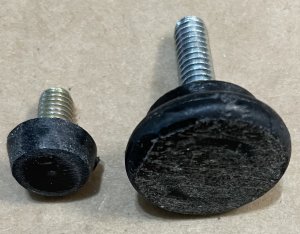 |
So I bought this universal pad. I show it here with the "bottom" side showing. |
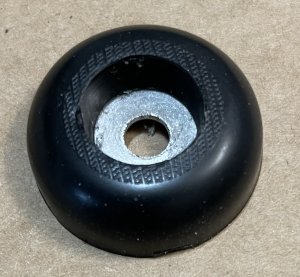 |
And here is the "top" side. |
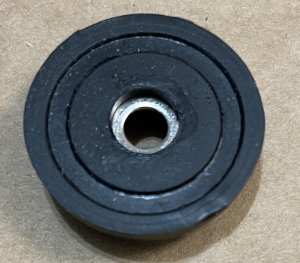 |
It came with a sheet metal/wood screw, meant to be driven into wood. Yes, I knew the stool legs were metal, but I "knew" that I could modify it to work. |
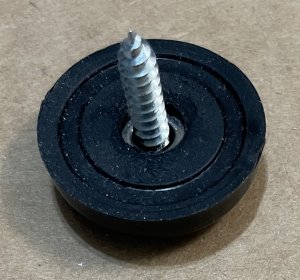 |
Failure #2 I bought some metric bolts that were
the same size as the original, and I figured that I could pass them through the hole in my new pad. All I
would need to do then was to simply drill the center hole a bit wider so the bolt would pass through. |
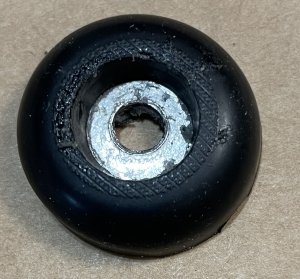 |
"All right. Fine", I told myself. "I will simply use a longer sheet metal screw (thin enough
to pass through the pad's hole as you see here). I had assumed that there would be a threaded hole about 1/2 inch
deep in the stool leg. I would simply drill a small hole at the bottom of this threaded opening, so that the tip of the
sheet metal screw would bind in my newly drilled hole. |
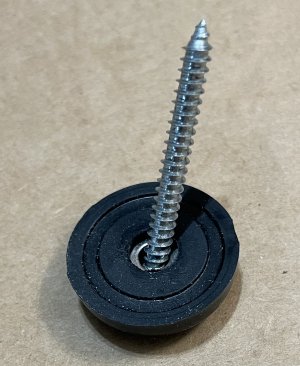 |
Failure #3 But I looked at the leg, and the round
ball was hollow - not solid. The threaded part was about 1/8 inch thick. |
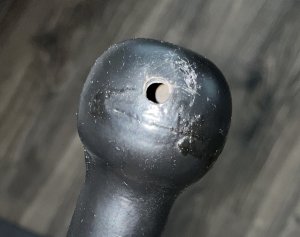 |
And then came the "Duh!" moment!
This is the moment where I realized that I had restricted my solution to fit
the assumption I had made about the problem/challenge. In this case, I have assumed that the bottom
of the furniture pad was the factory-intended bottom.
In other words, when I looked more closely at the pad, I noticed that the whole thing was made of
rubber, and that the "top" side actually made a better, and even wider, surface to contact the floor.
And, further, I was delighted to discover that the original pad would fit snugly in the (inverted) new pad! |
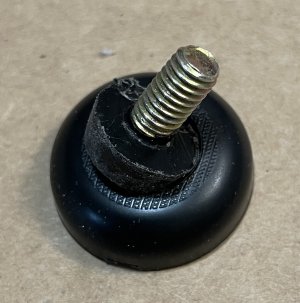 |
Here it is fully inserted. Actually I applied a bit of adhesive to the old pad, to help guarantee that it wouldn't slip out. |
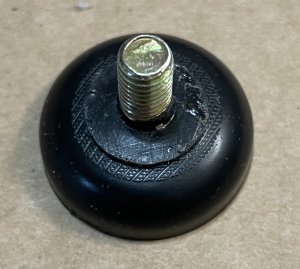 |
So here's the original tiny pad supplied by the manufacturer of the stool. It's just too small and hard, and concentrates the weight into a small area. |
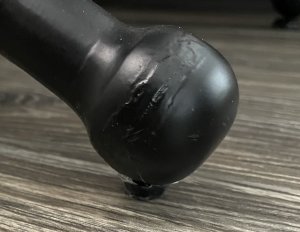 |
And here is my "new and improved" pad - softer and with better weight distribution. |
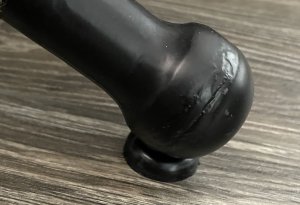 |
Second "Change Your Assumptions" Project
I have had a broken vertical blind slat for some months now. (I think one of the
grand kids did it during a previous visit by my daughter, but they're claiming innocense. . .) |
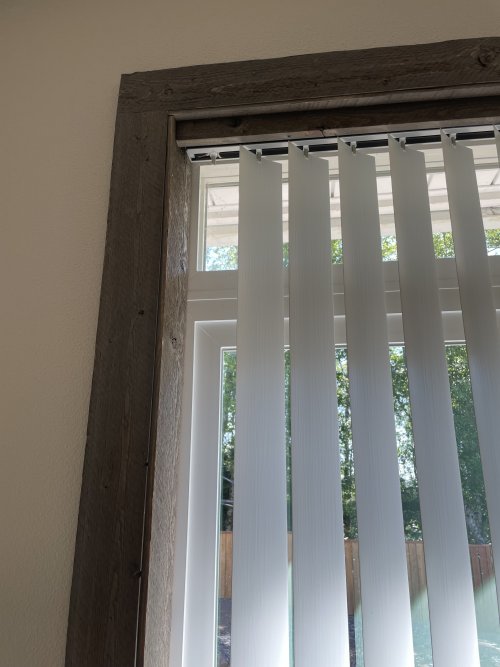 |
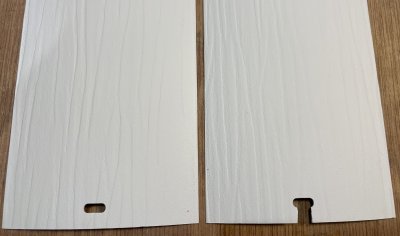 |
Here is an intact slat and the broken one. How to fix?? |
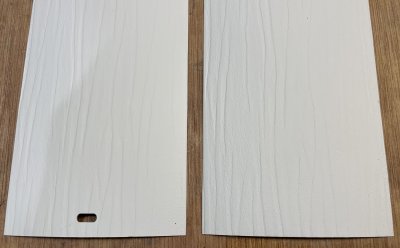 |
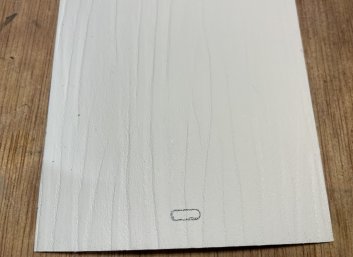 |
Finally the "Duh" moment came. Rather than try to make a patch on the broken end, I would simply turn the shade around and make a slot in the unbroken end! |
So I placed the good blind over the unbroken end and traced the outline of the slot. |
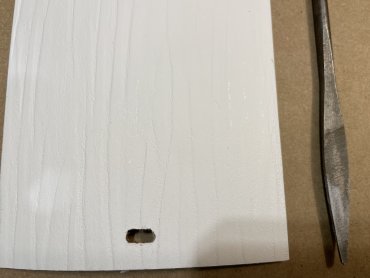 |
|
I then selected a drill bit whose diameter was such that it would just fit through the good
slot, and drilled a hole through each side of the traced outline. I used a thin file to enlarge the center
part after drilling the two holes on each side. |
|
And here is the repaired blind in place. No more uncovered
opening in my patio door! The solution was not to try to apply a patch of some sort to bridge the gap
at the top of the slat, but to simply turn the slat over and make a new mounting slot! |
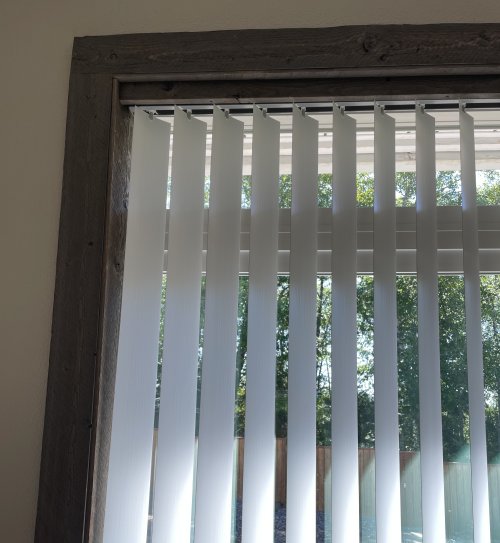 |
And the takeaway from these experiences. . . .
Have you been working on a project at home or at work and haven't found a solution?
Is it the case that no matter what you've tried, you just can't solve the problem?
Then maybe it's time to re-examine your assumptions. You just might find that
what you "knew" to be the ground rules is flawed, and that changing those "rules" (assumptions)
may lead (maybe even easily) to the solution!
Taking it deeper:
And what about some the "big" issues of life? What about "depression", for instance?
What kind of assumptions have been made - maybe some time long ago - about the "causes"
of one's depression?
What if it's just diet? (at least in part.) The Standard American Diet with meat overload, processed foods
with white flour, white rice, and white pasta, and sugary soft drinks and foods lends itself almost perfectly
to creating very low energy levels, very low depth of feeling, and big swings in feeling "up" or "down".
Magnesium deficiency is associated with higher incidence of depression, stress, and anxiety. Magnesium is found in nuts, seeds, beans, whole grains, wheat and oat bran and greens. (You won't find many of those in the Standard American Diet!)
Omega 3 compounds: Quite a few studies show a strong relationship between higher levels of Omega 3 compounds and the prevention of depression and anxiety. A high quality fish oil will provide these compounds.
And probiotics! What possible relationship would there be between probiotics and well being? It would be that 75 - 90 percent of the Magic Serotonin is produced in the gut bacteria!
I actually have written an extensive article on the many "mental" effects of poor diet, (along with the "physical" effects). Simply select the "Back" button at the top of this page to return to my Home Page. There, under "Health and Nutrition", you find a link titled "Poor Nutrition as Cause of Our Modern Crankiness". (It actually describes many other issues in addition to "Crankiness"!)
And what about that most flawed assumption of all? Low self-esteem. Low
self-acceptance. What if we just accepted ourselves - just the way we are?
What a concept!
And even better: What if we forgave ourselves?
We hear all the time that holding grudges about other people saps one's energy, and that it is well
to forgive others. Maybe it's time to forgive ourselves. . .
It's only taken me about 50 years to accept myself! And my life is now a life of ease and delight,
unless of course that I make flawed assumptions about how to mount a furniture pad!
Copyright © 2023 J.A.